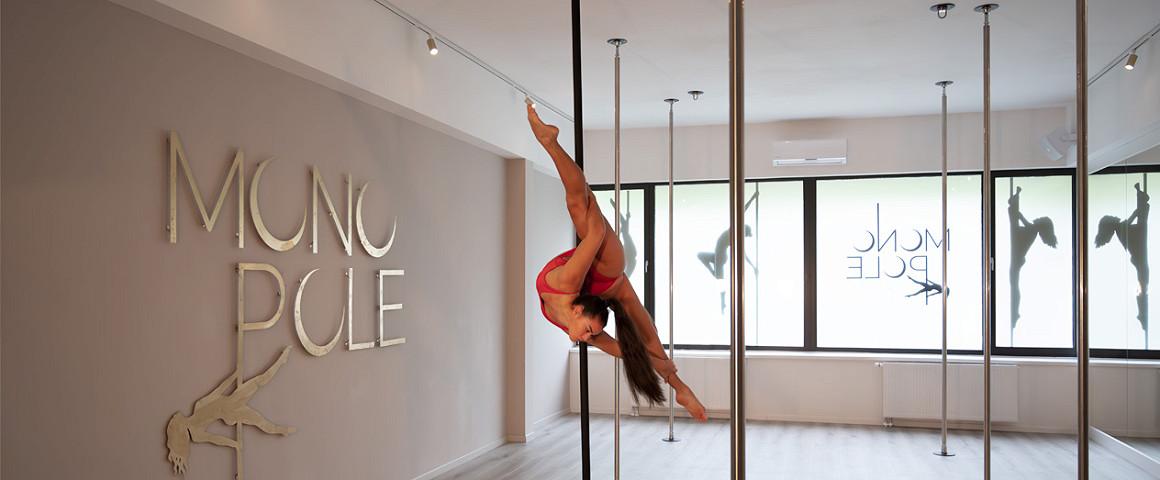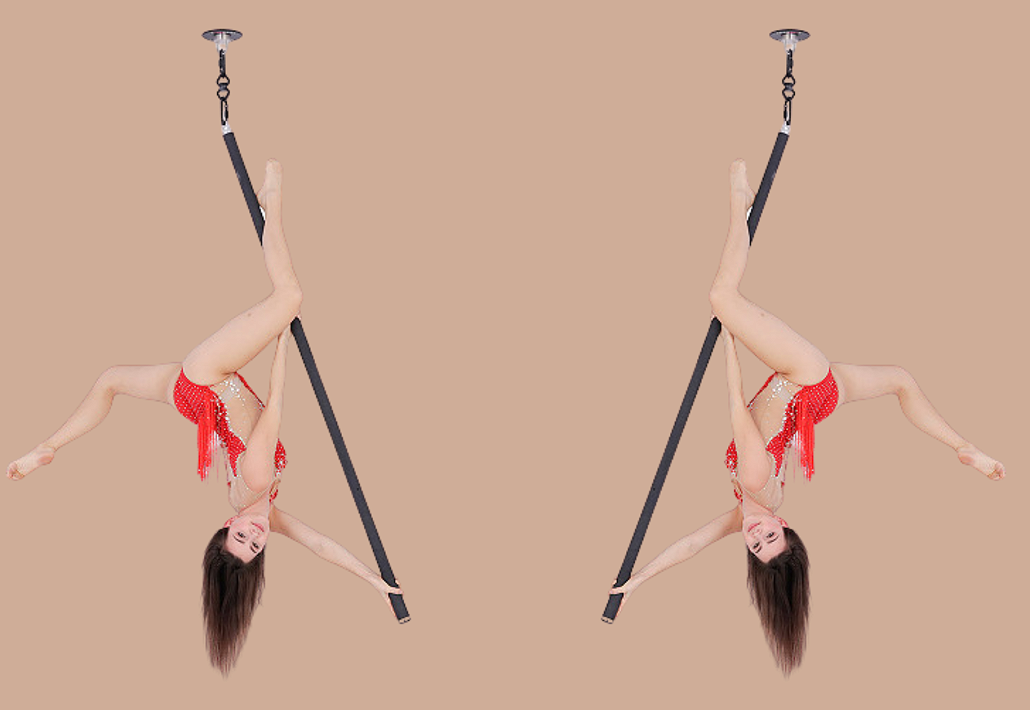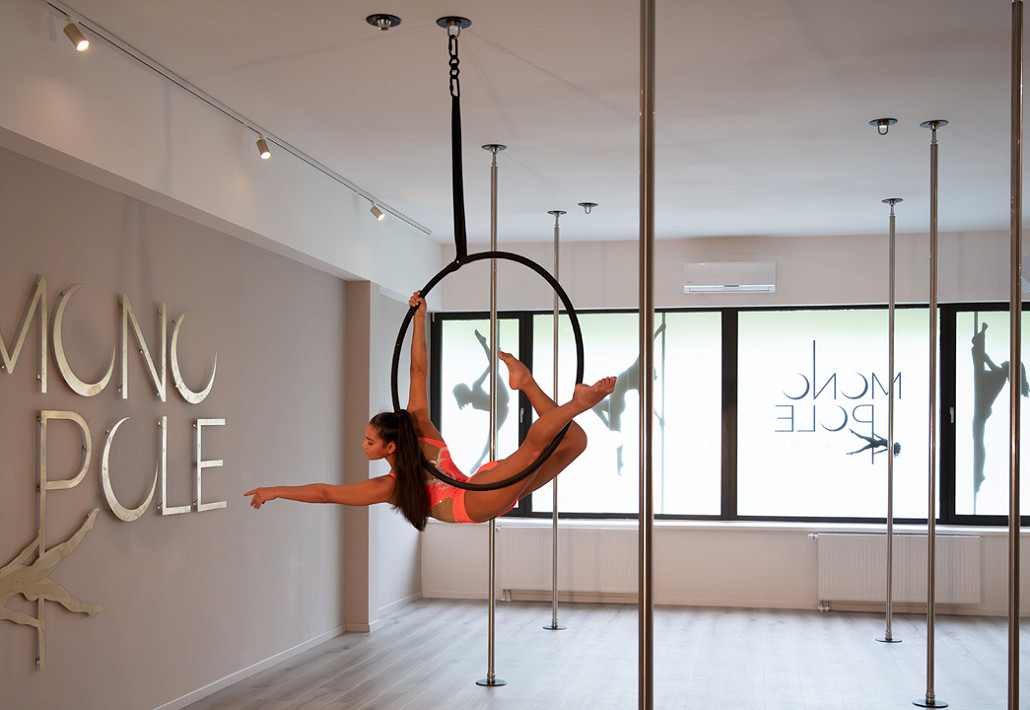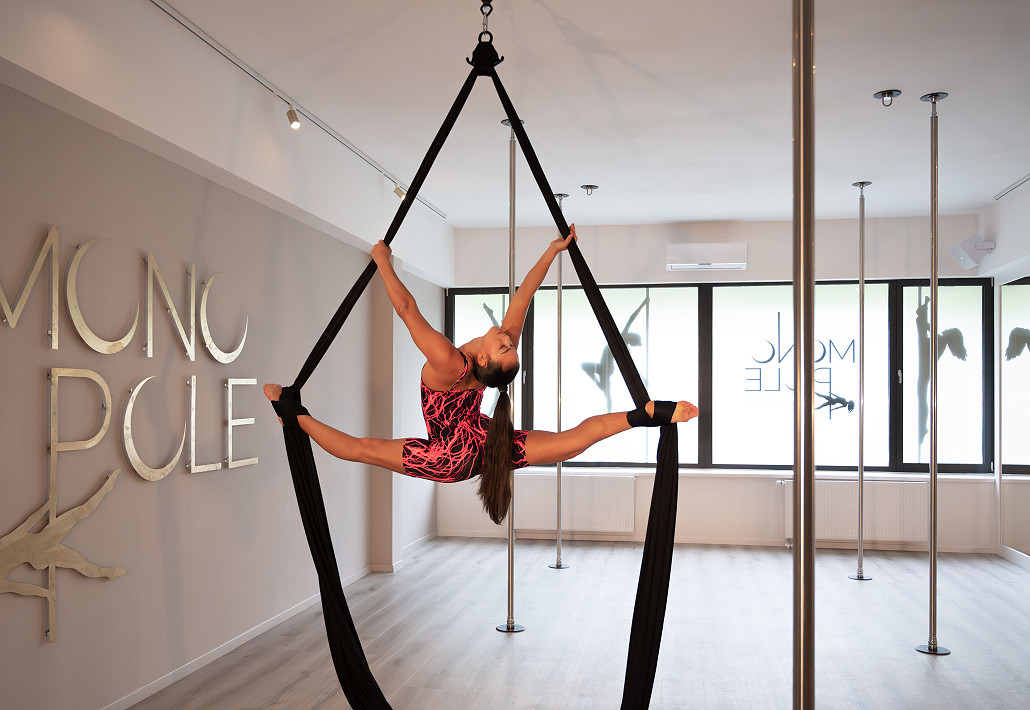
Živa Jalovec
May 5 - 6 min read


Aerial pole involves using a vertical pole to perform spins, poses, and acrobatic moves in the air. It requires a lot of upper body and core strength, as well as balance and control. You can use the pole to add a vertical dimension to your dance routine, incorporating climbs, drops, and dynamic transitions between the floor and the air.
Aerial pole dance, also known as aerial pole art, is a form of performance art that combines dance and acrobatics on a vertical pole. It involves performing various tricks, poses, and transitions while suspended in the air on a pole.
Unlike traditional pole dancing, which is typically performed on a stationary pole, aerial pole dance involves the use of a specially designed pole that can be raised or lowered to different heights. This allows performers to incorporate aerial acrobatics and transitions into their routines, creating a more dynamic and visually stunning performance.
Aerial pole dance requires a combination of strength, flexibility, and grace. Performers must be able to support their weight on the pole while executing complex moves and transitions. It is a physically demanding art form that requires extensive training and conditioning.
Aerial pole dance has gained popularity in recent years, both as a form of artistic expression and as a competitive sport. There are now a number of international competitions and events dedicated to aerial pole dance, showcasing the incredible skill and creativity of performers around the world.

Aerial flying pole sport, also known as an aerial pole, is a type of performance art that combines elements of pole dancing with aerial acrobatics. The sport involves performing acrobatic and dance moves while suspended from a vertical pole that is attached to the ceiling.
In aerial flying pole sport, performers use their strength, flexibility, and creativity to create a unique and visually stunning routine. They may incorporate spins, flips, drops, and other acrobatic moves, often while holding onto the pole with their hands, legs, or other body parts.
The sport requires significant upper body and core strength, as well as flexibility and balance. It can be physically demanding, but also provides a challenging and rewarding form of self-expression.
Aerial flying pole sport is practiced and performed around the world, often in a competitive or showcase setting.
Aerial hoop (also known as Lyra) involves using a circular metal hoop suspended from the ceiling to perform spins, poses, and acrobatic moves in the air. It requires a combination of strength, flexibility, and grace. You can use the hoop to create beautiful shapes and lines in the air, incorporating drops, rolls, and fluid transitions between poses.
Aerial hoop dance is a form of aerial acrobatics that involves performing choreographed movements and poses while suspended in a large metal hoop. The Lupit Hoop is a circular, high-quality stainless-steel apparatus (stainless steel or black powder-coated finish) that is suspended from the ceiling and has a convertible design. The Hoop can be easily converted from an unattached to a single or double suspension point. It can be used static, rotating or swinging.
Aerial hoop dance requires strength, flexibility, and balance, and performers often combine elements of dance, gymnastics, and circus arts to create a unique and dynamic performance. The movements and poses performed on the hoop can range from graceful and fluid to powerful and dynamic, depending on the style and skill level of the performer.
Training for aerial hoop dance typically involves building strength and flexibility through conditioning exercises and practising specific skills and movements on the hoop. Safety is also a crucial aspect of training, as aerial acrobatics can be dangerous without proper instruction and equipment.
Aerial hoop dance has gained popularity in recent years and is often performed in circus shows theatrical productions, and even fitness classes. It offers a unique and challenging way to express oneself through movement and can be a rewarding and exhilarating form of exercise and performance.

Aerial silk (also known as aerial fabric or tissue) involves using two long pieces of fabric suspended from the ceiling to perform spins, poses, and acrobatic moves in the air. It requires a combination of strength, flexibility, and grace, as well as a strong sense of spatial awareness. You can use the silk to create flowing, fluid movements in the air, incorporating wraps, drops, and intricate transitions between poses.
When incorporating aerial apparatuses into your dance routine, it's important to start with the basics and work your way up to more advanced moves as you build strength and confidence. It's also important to train with a qualified instructor who can help you learn proper techniques and safety precautions. With practice and dedication, you can use aerial poles, hoops, lollipops, and silk to create a breathtaking and unforgettable dance performance.
Overall, aerials are beautiful and exciting performance art that showcases the skill and athleticism of its performers.
In order to get started with aerials, it's important to find a reputable training program or instructor who can provide guidance and support. The first step in learning is to develop upper body and core strength, as these are essential for performing aerial stunts and maintaining balance.
It's also important to learn proper techniques for grip and support, as well as techniques for performing various aerial moves and spins. Over time, as you progress in your training, you can work on mastering more advanced moves and incorporating them into your performances.
In addition to physical training, it's also important to have the right mindset and attitude for aerials. This means having the confidence to try new things and push yourself to your limits, while also being mindful of your own safety and well-being. It's also important to have a supportive and encouraging community, as aerials can be a challenging and rewarding experience that is made even better by sharing it with others.
Aerials are a growing and exciting art form, and there are many opportunities for talented performers to showcase their skills on stages and in competitions around the world. Whether you're just starting out or are a seasoned aerialist, aerials are a wonderful way to express your creativity, challenge yourself physically and mentally, and be part of a dynamic and supportive community.

Learning aerials can be a fun and challenging experience, but it requires discipline, patience, and practice. Here are the steps to get started:
Before practising, warm up your muscles by doing some light cardio and stretching exercises. Focus on stretches for your arms, legs, and core to avoid injury.
Start by holding the aerial and getting used to its weight and balance. Stand with your feet hip-width apart and grip the aerial with both hands, using a firm but relaxed grip.
Begin by practising basic moves such as spins, slides, and grip changes. Make sure to keep your body in control and avoid jerky movements.
Aerials are a high-flying, acrobatic discipline and it is important to know how to fall safely. Make sure to learn proper landing techniques and always practice in a controlled and safe environment. Use crash mats to protect the body from a range of impact injuries, such as falling on hard surfaces.
Consider taking lessons from a professional instructor who can guide you through the learning process and ensure that you are practising correctly and safely.
Regular practice is key to improving your skills and building strength and confidence. Set aside time each week to practice, and be patient with yourself as you learn and grow.
You are given to fly. Spread your wings!